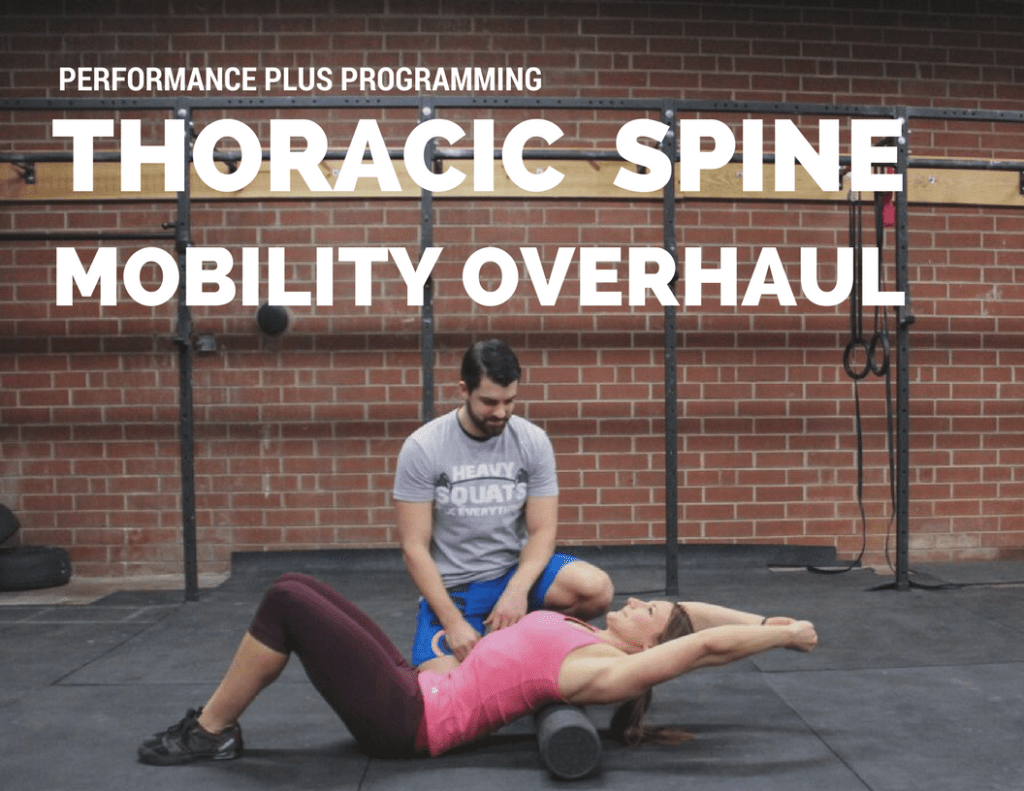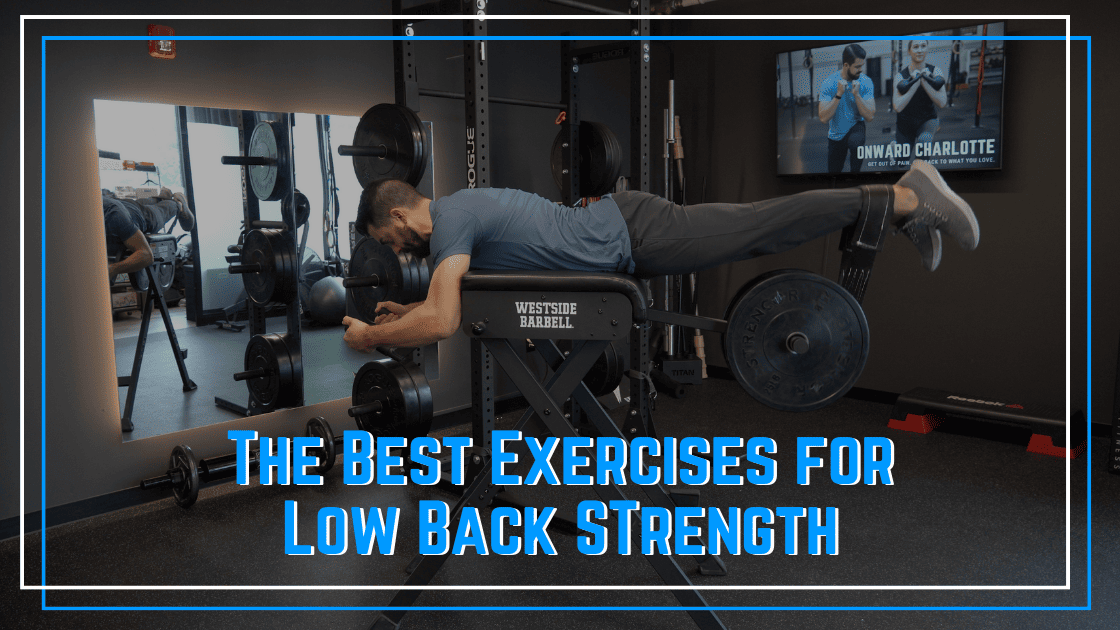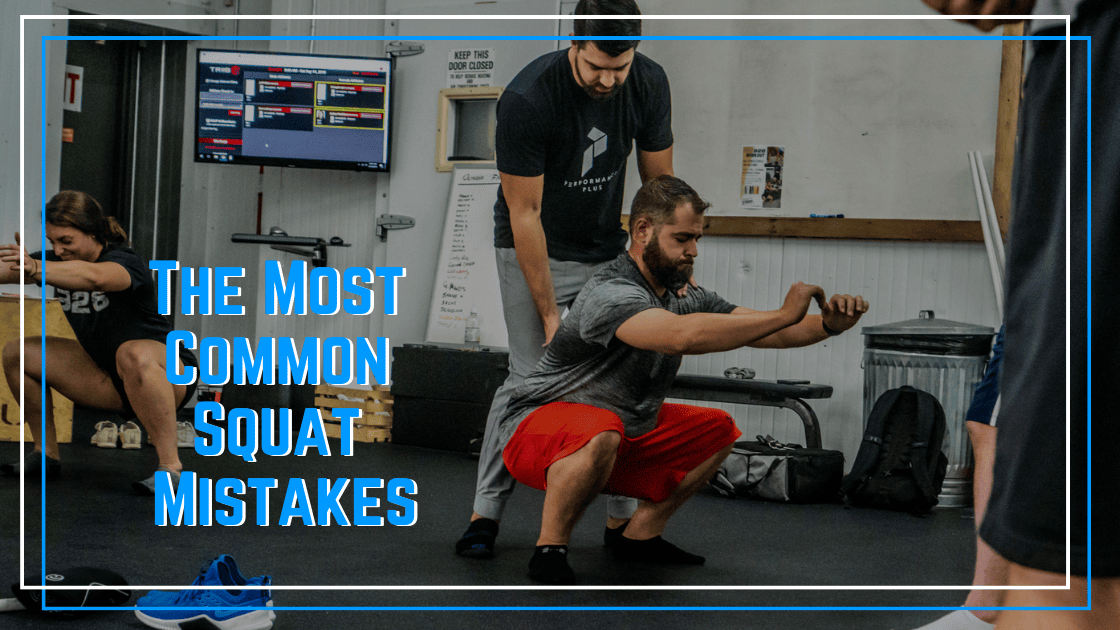Thoracic mobility is one of the most important areas for range of motion in the fitness athlete. The thoracic spine plays a huge role in keeping the shoulders and the lumbar spine working properly, and pain-free. To test thoracic spine mobility, I look at the rotation range of motion in each direction. This lets me know if there is a unilateral restriction. Limited rotation also means there will be decreased extension in the thoracic spine.
To test thoracic extension and rotation mobility, begin sitting on knees with your butt on your heels. Get next to a wall to prevent yourself from bending to the side and instead only rotate. Place one forearm on the ground and the other behind your back. Rotate towards the up hand. 50 degrees of rotation should be available in each direction (shoulders relative to the ground).
Testing thoracic spine mobility should be a priority for anyone dealing with cervical spine issues, low back pain, shoulder pain, and limited mobility in overhead lifting.
For a full thoracic spine mobility plan, check out my THORACIC MOBILITY OVERHAUL PROGRAM.
Thoracic Mobility Exercises
Foam Roller Thoracic Extensions
Foam rolling is almost everyone’s go-to stretch to improve upper back mobility. But you would be surprised at how many people perform this exercise incorrectly, resulting in slowed mobility progress. Watch this video to learn the proper way to use the foam roller for thoracic mobility by not allowing the rib cage to flare, thus limiting lumbar spine movement. Keep your hands behind your head as you do this exercise, especially if you are having neck pain.
Side-Lying Rotations
Side-lying rotations make a great warm-up for anyone with a unilateral restriction in thoracic spine motion and can be done without any equipment. For those that have cervical spine pain, lying your head on a foam roller can be a nice addition to this movement.
Quadruped Rotations
Quadruped rotations have a distinct advantage because, with the use of resistance bands, we can actually load thoracic movement lightly. Loading the movement helps create a little stability in the spine and will help athletes “lock-in” any mobility gains they get a little better.
Bench Thoracic Spine Extensions
These do a great exercise to incorporate a little mobility into the triceps, as well as the shoulders and thoracic spine. A partner can provide some overpressure by pushing between the shoulder blades for a further push into mobility restrictions. The following video explains how to change your set up to bias the upper back vs. the shoulders.
Foam Roll With Weight
The foam roll holding a weight allows an athlete to provide some self-overpressure while working thoracic spine mobility and shoulder range. Make sure the abdominals stay contracted to prevent lumbar hyperextension, as this will decrease this stretch’s usefulness. To work on this, cue the athlete to keep their rib cage down.
Barbell Opener
The Barbell Opener is my absolute favorite drill for improving thoracic mobility. It mobilizes the upper back and the shoulders simultaneously. I have my hand width equal to whatever exercise I’m doing that day (wide for snatches, narrow for pressing). Adding some partner overpressure makes this an amazing mobility drill.
View this post on Instagram
If you’re tired of thoracic spine stiffness limiting your fitness then jump into our Thoracic Mobility Overhaul program. Hundreds of athletes have unlocked their mobility and performance following this four-week plan!







